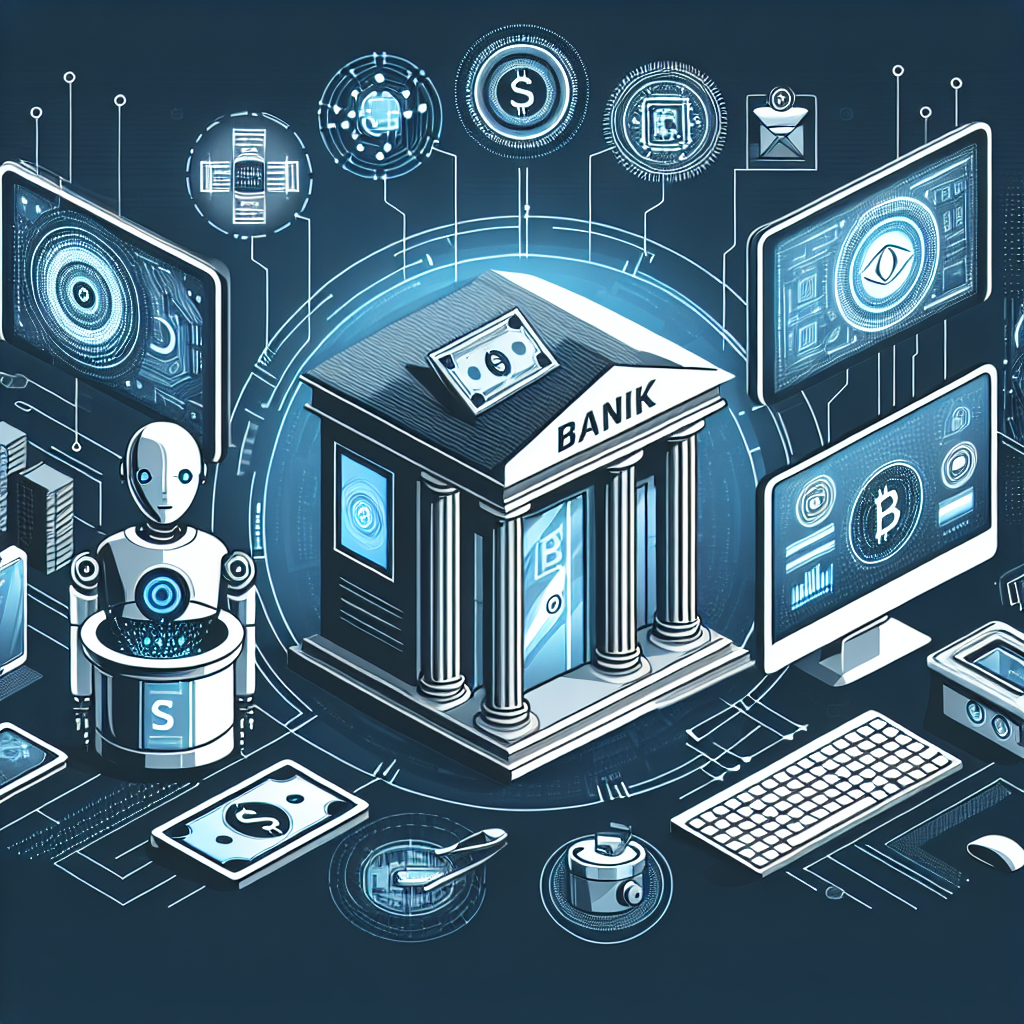The Future of AI in Banking: How Technology is Transforming the Industry
Artificial Intelligence (AI) has become a hot topic in the banking industry in recent years, with many financial institutions looking to leverage this technology to enhance their operations and provide better services to their customers. AI has the potential to revolutionize the banking industry by improving efficiency, reducing costs, and enhancing the customer experience. In this article, we will explore how AI is transforming the banking industry and what the future holds for this exciting technology.
What is AI in Banking?
AI refers to the simulation of human intelligence in machines that are programmed to think and act like humans. In the banking industry, AI technologies such as machine learning, natural language processing, and robotic process automation are being used to automate repetitive tasks, analyze data, and provide personalized services to customers.
AI in banking is being used for a wide range of applications, including fraud detection, risk assessment, customer service, and personalized marketing. By leveraging AI, banks can process large amounts of data quickly and accurately, identify patterns and trends, and make data-driven decisions in real-time.
How is AI Transforming the Banking Industry?
AI is transforming the banking industry in several ways, including:
1. Enhanced Customer Service: AI-powered chatbots and virtual assistants are being used to provide personalized customer service 24/7. These virtual assistants can answer customer inquiries, provide account information, and even help customers make financial decisions.
2. Fraud Detection: AI algorithms are being used to detect and prevent fraud in real-time. By analyzing transaction data and customer behavior, AI can identify suspicious activity and alert banks to potential fraud before it occurs.
3. Risk Assessment: AI is being used to assess credit risk and determine the creditworthiness of borrowers. By analyzing credit history, income, and other factors, AI algorithms can provide banks with more accurate risk assessments and help them make better lending decisions.
4. Personalized Marketing: AI is being used to analyze customer data and provide personalized offers and recommendations to customers. By analyzing customer behavior, preferences, and demographics, banks can create targeted marketing campaigns that are more likely to resonate with customers.
5. Process Automation: AI-powered robotic process automation (RPA) is being used to automate repetitive tasks such as data entry, document processing, and compliance checks. By automating these tasks, banks can improve efficiency, reduce errors, and free up employees to focus on more strategic activities.
What Does the Future Hold for AI in Banking?
The future of AI in banking looks bright, with many exciting developments on the horizon. Some of the key trends to watch include:
1. Increased Adoption of AI: As AI technologies become more advanced and affordable, we can expect to see a greater adoption of AI in the banking industry. Banks of all sizes will leverage AI to improve efficiency, reduce costs, and enhance the customer experience.
2. Greater Personalization: AI will enable banks to provide more personalized services to customers, including personalized product recommendations, tailored financial advice, and customized marketing campaigns. By analyzing customer data and behavior, banks can create more engaging and relevant experiences for their customers.
3. Enhanced Security: AI will play a key role in enhancing cybersecurity in the banking industry. By using AI algorithms to analyze vast amounts of data and identify patterns of suspicious activity, banks can detect and prevent cyber threats in real-time.
4. Improved Efficiency: AI-powered automation will streamline banking operations, reduce manual processes, and improve efficiency. By automating routine tasks, banks can free up employees to focus on more strategic activities and provide better service to customers.
5. Seamless Integration: AI will enable banks to integrate their systems and processes more seamlessly, providing a more connected and cohesive banking experience for customers. By leveraging AI technologies such as natural language processing and machine learning, banks can create a more intuitive and user-friendly experience for customers.
FAQs
Q: What are some of the challenges of implementing AI in banking?
A: Some of the challenges of implementing AI in banking include data privacy concerns, regulatory compliance, and the need for skilled AI talent. Banks must ensure that they have robust data protection measures in place to safeguard customer data and comply with regulations such as GDPR. Additionally, banks must invest in training their employees and hiring skilled AI professionals to implement and maintain AI technologies effectively.
Q: How can AI help banks improve customer service?
A: AI-powered chatbots and virtual assistants can help banks improve customer service by providing personalized assistance to customers 24/7. These virtual assistants can answer customer inquiries, provide account information, and even help customers make financial decisions. By leveraging AI, banks can enhance the customer experience and increase customer satisfaction.
Q: Will AI replace human employees in the banking industry?
A: While AI technologies are automating many routine tasks in the banking industry, they are unlikely to replace human employees entirely. Instead, AI will augment human capabilities by automating repetitive tasks, analyzing data, and providing insights to help employees make better decisions. Human employees will still play a crucial role in providing personalized service, building relationships with customers, and handling complex tasks that require human judgment.
In conclusion, AI is transforming the banking industry in profound ways, from enhancing customer service to improving efficiency and security. As AI technologies continue to evolve and become more advanced, we can expect to see even greater innovations in the banking industry. By leveraging AI, banks can provide more personalized services, streamline operations, and create a more connected and cohesive banking experience for customers. The future of AI in banking is bright, and we can expect to see even more exciting developments in the years to come.

